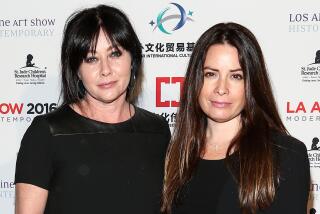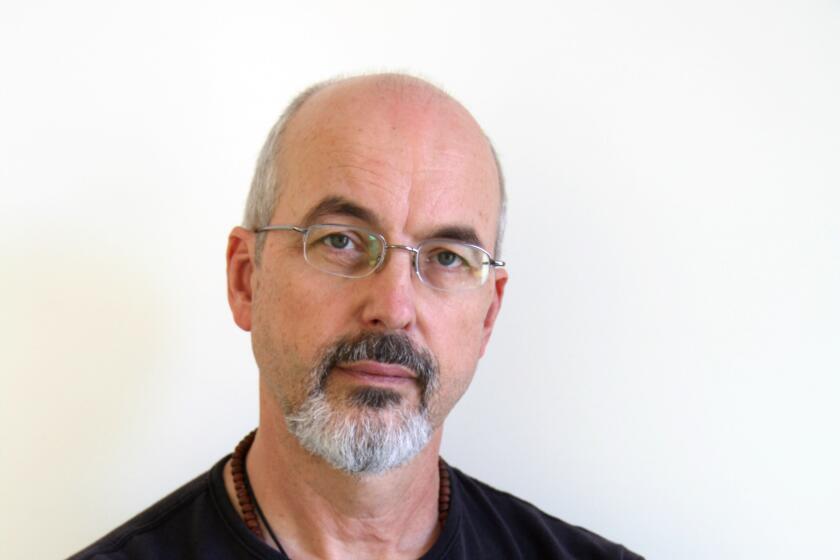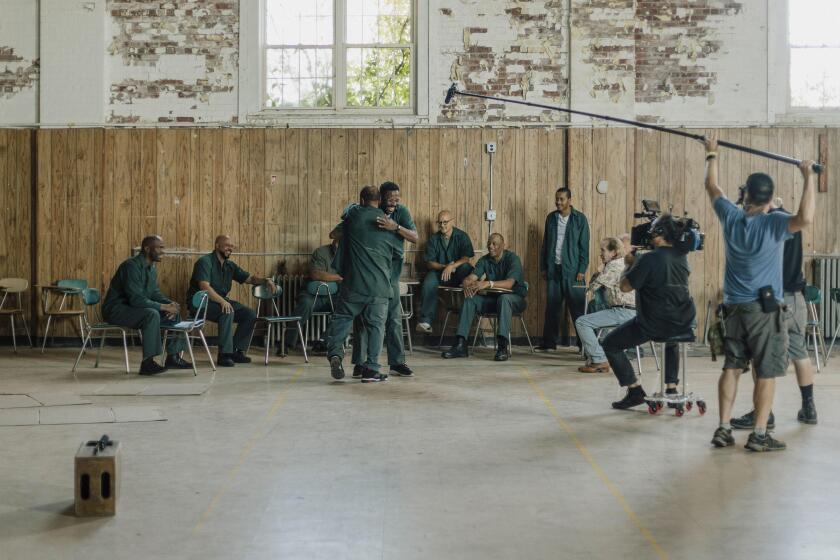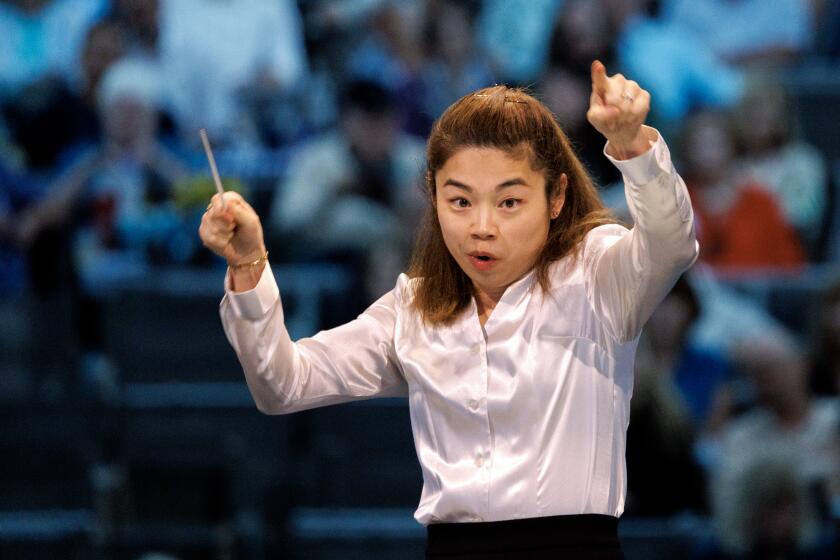SPYING ON LACE VISITORS
Don’t visit Los Angeles Contemporary Exhibitions if you like your privacy. Starting Friday, most of the downtown gallery space will be under “Surveillance,” LACE’s latest show.
Myriad video cameras and hidden mikes will expose viewers’ bodies and voices. The recorded information will be shown on monitors in the central LACE gallery.
“The whole building--our main offices, the bookstore and the main gallery--will be under audio and video surveillance,” said Jeff Mann, LACE exhibitions coordinator, “so you’ll be able to see whatever is going on in any part of the building from the main gallery.”
The new show, which includes recorded videos and still photographs, explores surveillance--the intrusion of contemporary technology into people’s lives. Its message is carried through artworks created with security and surveillance techniques and devices, such as cameras used to monitor supermarket shoppers or illegal immigrants at the U.S.-Mexico border.
“It’s not just about surveillance,” Mann said. “The way the works were done was by surveillance,” many of them captured with concealed cameras or microphones.
About 30 artists, selected by curators Deborah Irmas and Branda Miller, contributed to the show.
“As people walk into the building,” Mann said, “they’ll be under the surveillance of electronic infrared heat-seeking intrusion detectors,” part of a piece by Julia Scher on the outside of the LACE building.
“It’s a banner that’s hanging above the door, studded with these heat-seeking devices. As you enter, the seekers pick up your presence and lights flash and bells ring.”
Inside, Gary Lloyd’s “radio painting” is bugged to monitor viewers’ conversations, and his heart-shaped radio transmitter sends out visitors’ conversations over all airwaves within 10 blocks of LACE.
Other works include government landsat photographs (pictures taken from space) of the Chernobyl nuclear power plant, and a six-part video program with such segments as “Private Space/Public Space,” “Government Spooks” and “Viewer/Voyeur.” Sam Samore and John Baldessari are represented by photographs they instructed other people to take. The exhibition continues until April 12.
Got an ear for art?
An aural portrait of three Texans, excerpts from a Russian constructivist play and a train trip along the Great Wall of China are among upcoming offerings in the Museum of Contemporary Art’s radio series “The Territory of Art, II.”
The 13-show program, heard locally on Mondays at 10 p.m. over KUSC-FM, features commissioned performances of “radio art,” works ranging from traditional storytelling pieces to a non-narrative expressionistic work. Visual and video artists, contemporary musicians and composers, poets, playwrights and actors have collaborated on the series. Comedy, satire, drama and poetry can be heard.
Here are the remaining programs: Monday, “Texas Portraits” colors in the lives of three disparate Lone Star State residents; March 2, “Zangezi” features parts of the Russian drama; March 9, “Prisoner” by visual artist Jonathan Borofsky explores freedom and captivity through an interview with a convict; March 16, “Miami Voices” gives four female storytellers the chance to confront their thoughts, feelings and fears about life, love and death; March 23, “Snake Bride” is a trip along the Great Wall of China told by Marina Abramovic and Ulay; March 30, “Pinny’s Ghost” tells the story of an Iowa farmer tortured by an imagination that conjures up bizarre, nightmarish creatures.
Japanese influence on Western art and culture will be the focus of a new center at New Jersey’s Rutgers.
The International Center for Japonisme, to be housed in the school’s Jan Voorhees Zimmerli Art Museum, will study the Japanese influence on Western fashion, music, dance and economics, as well as art, said Phillip Dennis Cate, director of the Zimmerli Art Museum and the center’s founder. It will promote research, publications, exhibitions and other cultural activities that reveal the Japanese impact from the Meiji period (1868-1912) to the present. Rutgers and other venues around the country and in Europe and Japan will host these activities, Cate said in an announcement about the center.
Parisian critic Philippe Burty coined the phrase Japonisme, Cate said, to proclaim “a new field of study--artistic, historic and ethnographic,” establishing Japanese culture as a major source of inspiration for Western civilization. Much of the Zimmerli Art Museum’s collection of 19th- and early 20th-Century graphics deals with the theme of Japonisme.
Cate said he hopes to raise a $2-million endowment fund over the next several years to support the center and its collections. He is organizing a major exhibit for 1989-90 dealing with the Japanese influence on American and European art at the turn of the century. He said he also hopes to bring works at Japan’s National Museum and National Museum of Western Art to the center in 1989.
Five Santa Barbara County artists have been selected through a countywide competition to develop public artworks for the region.
The artists, to form a design team with internationally renowned artists Helen Mayer Harrison and Newton Harrison, will work under the aegis of the Santa Barbara Sites project. The artists are: Richard Aber, a sculptor whose work has been shown at the Newport Harbor Art Museum and the Santa Barbara Museum of Art; Marge Dunlap, whose primary focus on ceramic work expands to include poster art; Paul Hobson, a painter and graphic artist, who assisted the late Herbert Bayer of the Bauhaus for 10 years; Marcello Petrocelli, who has designed large-scale environmental installations; and Manuel Unzueta, who has a master of fine arts degree in painting from UC Santa Barbara and teaches the history of Chicano art.
The new design team will follow the evolution of about six public art projects from design through review stages.
More to Read
The biggest entertainment stories
Get our big stories about Hollywood, film, television, music, arts, culture and more right in your inbox as soon as they publish.
You may occasionally receive promotional content from the Los Angeles Times.






